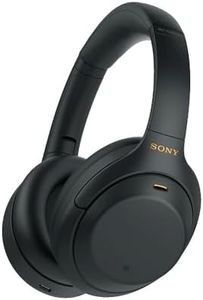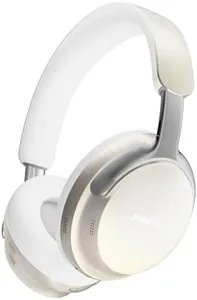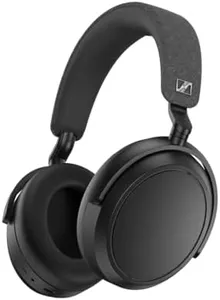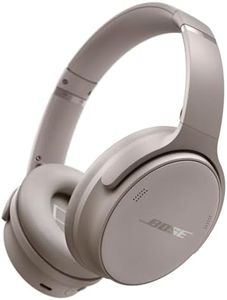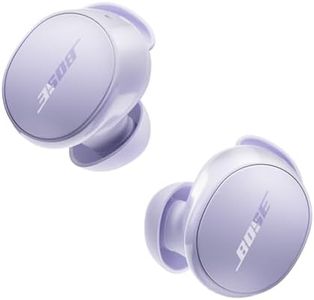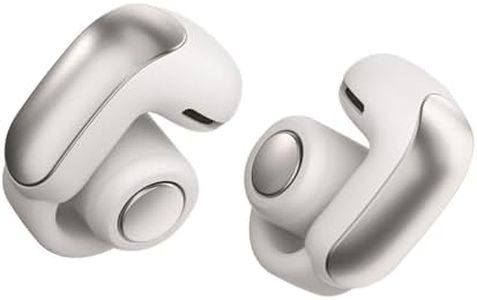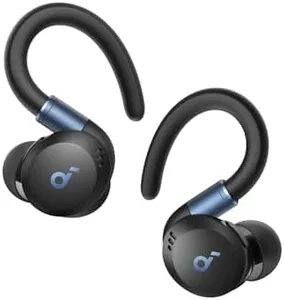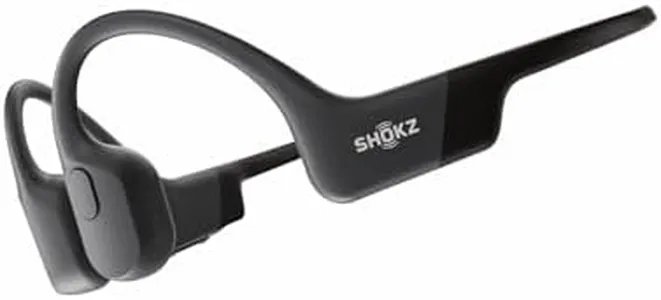We Use CookiesWe use cookies to enhance the security, performance,
functionality and for analytical and promotional activities. By continuing to browse this site you
are agreeing to our privacy policy
10 Best Workout Headphones
From leading brands and best sellers available on the web.Buying Guide for the Best Workout Headphones
Choosing the right workout headphones can enhance your exercise experience by providing comfort, motivation, and reliable performance. The best pair for you will depend on your workout environment, preferred music or audio type, and how you move during exercise. It's important to consider how headphones will stay in place, how they sound, how well they endure sweat and weather, and whether they support your workout habits. By understanding the main features and what they offer, you can confidently select headphones that make your workouts more enjoyable and effective.Fit and ComfortFit and comfort refer to how the headphones feel when you wear them, and how well they stay on during movement. This is critical for workouts, as poor fit can lead to distractions or even damage if the headphones fall off. There are different types, like in-ear, on-ear, and true wireless earbuds. In-ear generally offers the most secure fit for active movement, but some people may prefer the larger cups of on-ear or over-ear for comfort. Think about the types of exercises you do: if you run or jump a lot, secure, lightweight options with wing or hook designs are best. Try a few types to see which feels most secure and comfortable for your routine.
Sweat and Water ResistanceSweat and water resistance indicates how well the headphones can withstand exposure to moisture. This is often rated by an IP (Ingress Protection) rating. For light gym workouts, a basic resistance is enough, but for intense workouts, running outdoors, or use in rainy conditions, look for higher ratings like IPX5 or above. The higher the number, the better the protection. Match your choice to how sweaty or wet your workouts typically get; if you’re frequently exposed to sweat or rain, strong resistance is essential to make your headphones last.
Battery LifeBattery life tells you how long the headphones can run before needing a recharge. For short daily workouts, even a few hours can be enough, while long-distance runners or people who use headphones off and on throughout the day will benefit from longer battery life (eight hours or more). If you often forget to charge your devices, look for headphones with quick-charge features or longer single-session playtime. Consider your workout duration and frequency to determine the right battery life for you.
Sound Quality and VolumeSound quality and volume refer to how clear and powerful the audio is. Some people prioritize deep bass and crisp detail for motivation, while others just want decent sound for podcasts or calls. Lower-end headphones may not get loud enough for noisy gyms or outdoor environments. Consider how important music quality is to your workout; if you need rich, motivating sound, look for headphones praised for clear highs and punchy bass. If you mainly listen to audiobooks or podcasts, you can focus less on premium sound.
Noise Isolation vs. AwarenessNoise isolation refers to how well headphones block out surrounding sounds, while awareness modes let in external sounds for safety. In a quiet home gym, isolation might be fine, but if you run or cycle outdoors, hearing your surroundings is vital. Some headphones come with features like 'ambient mode' that uses microphones to let in important outside noises. Think about where and how you work out: if you’re outdoors near traffic or in busy spaces, choose a model that enables some awareness of your environment.
Controls and ConnectivityControls refer to how you manage volume, tracks, and calls—either via buttons, touch pads, or voice. Connectivity covers how the headphones pair with devices, typically through Bluetooth. Easy, reliable controls are important so you don’t have to stop or fumble with your phone mid-workout. Make sure the controls are intuitive and the Bluetooth connection is stable for your phone or device. If you’re using a smartwatch or fitness tracker to play music, check compatibility first.
Durability and Build QualityDurability and build quality describe how well the headphones handle drops, bending, and repetitive use. Workout headphones often face rougher treatment than everyday pairs, so look for reinforced cables (if wired), strong plastics, or flexible materials that won’t crack easily. If you tend to throw your gear into a gym bag or pockets, prioritize sturdier builds. Evaluate how gently or aggressively you handle your gear to find a pair that will stand up to your habits.
